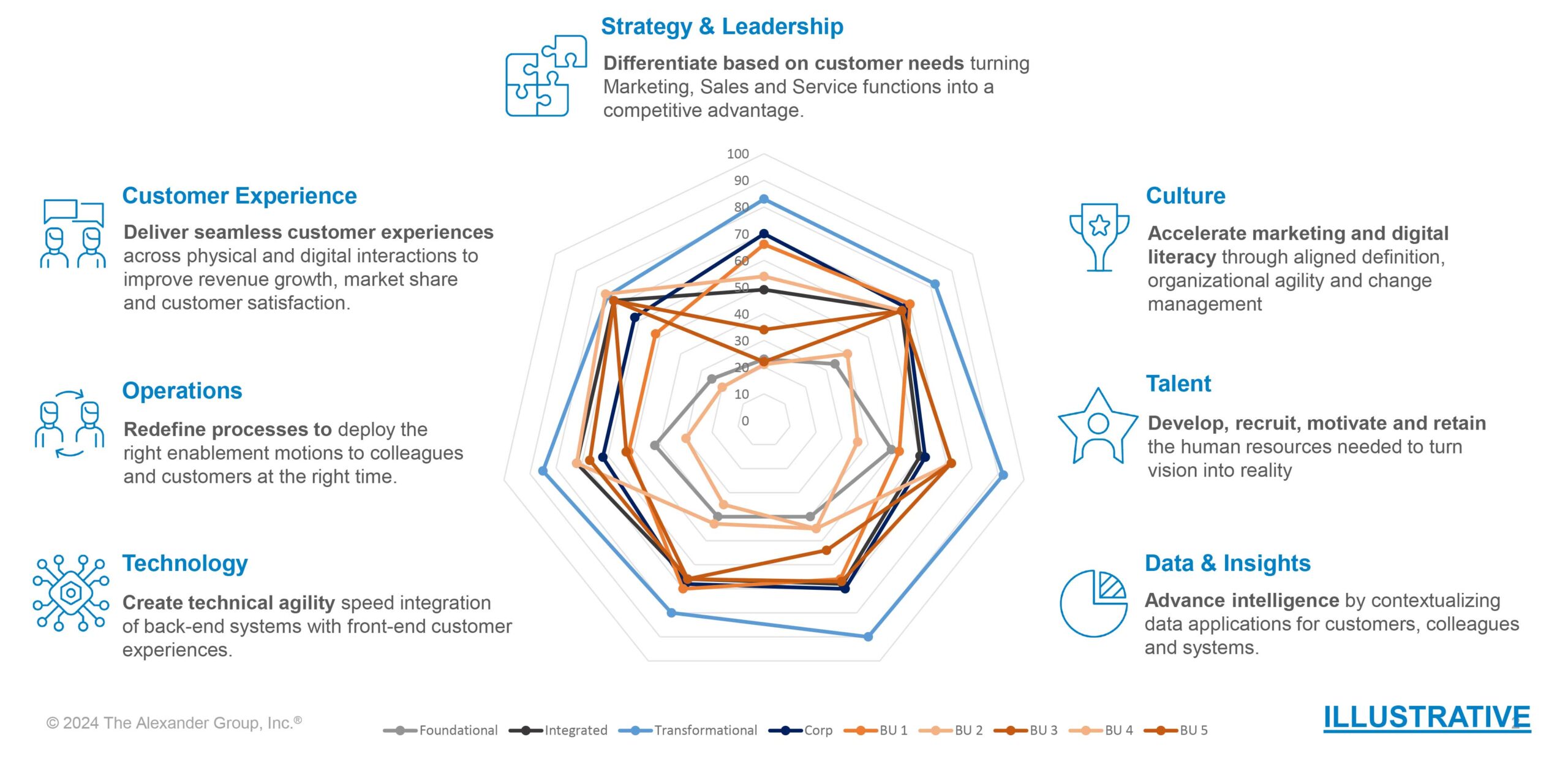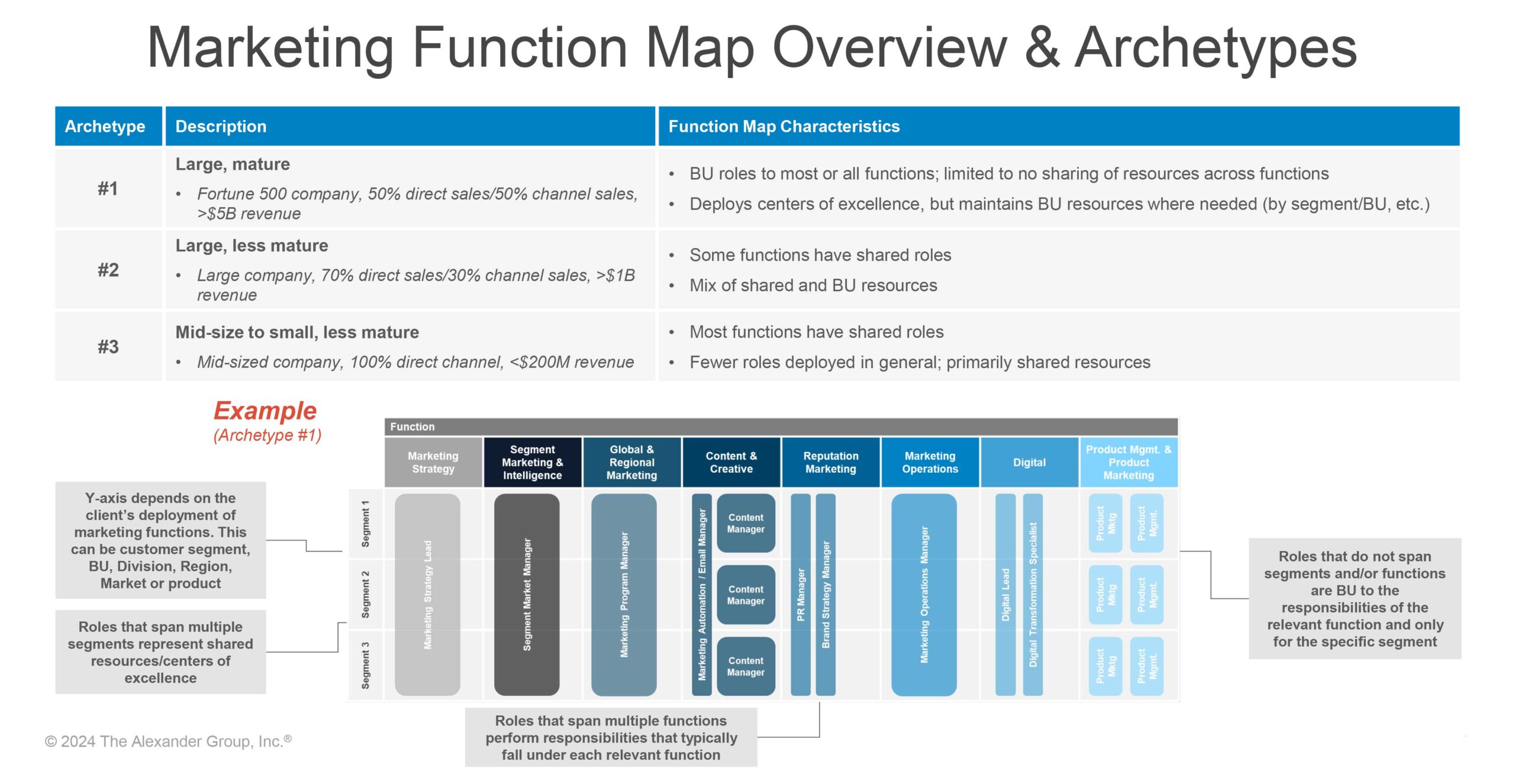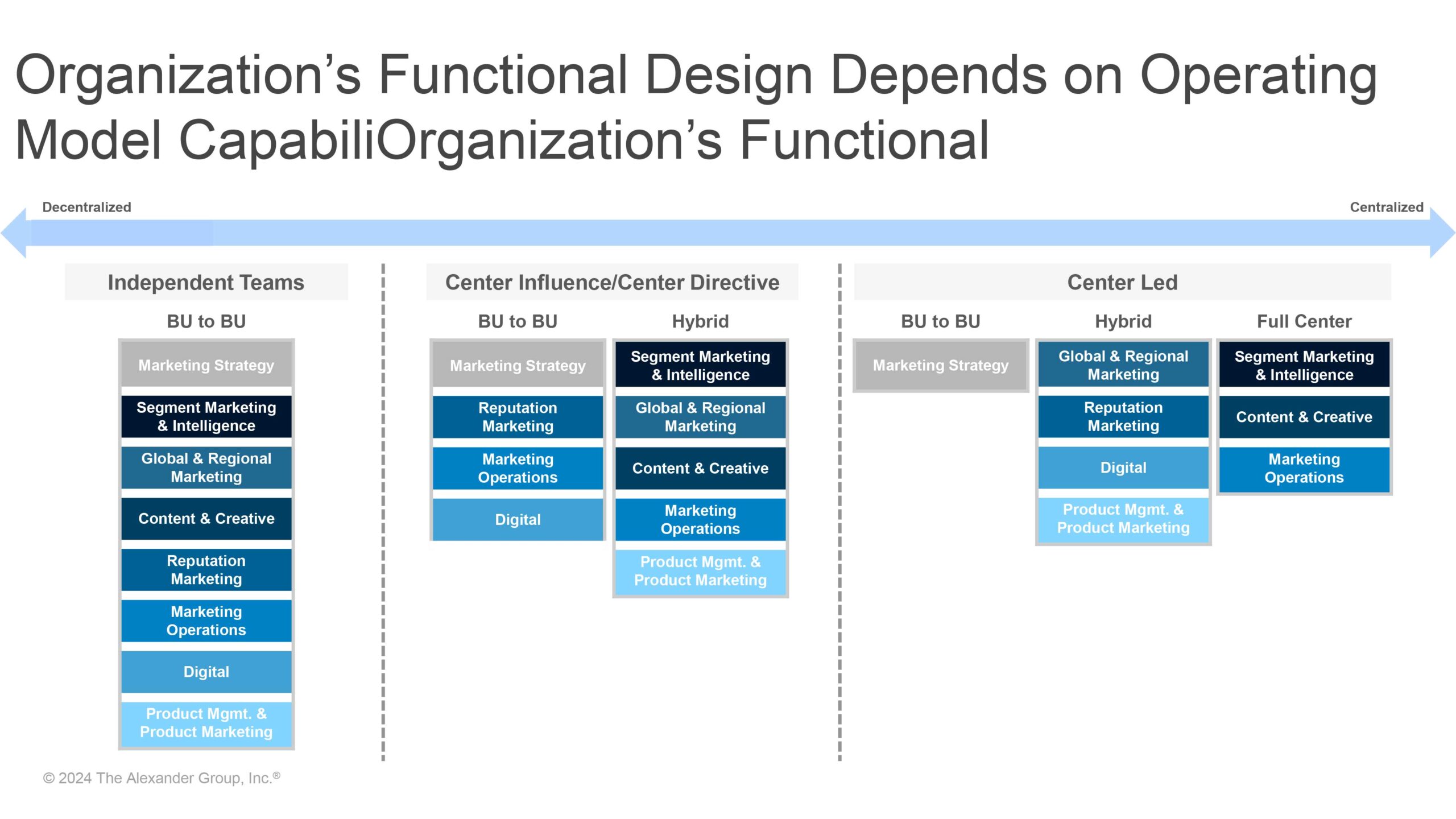
Alexander Group’s Modern Marketing Maturity Model

Marketing organizational structures serve as the backbone of any successful marketing function. They determine how teams collaborate, allocate resources and execute strategies. In today’s dynamic environment, where digital transformation, data analytics and customer experience reign supreme, choosing the right structure is paramount.
Here are the key components of modern marketing organizational design.
The functional structure organizes marketing teams based on specialized roles where teams are grouped by expertise (e.g., digital marketing, content, analytics). This structure is ideal for large organizations with distinct marketing functions. Benefits include clear reporting lines within each function, efficient resource allocation and expertise-driven decision-making.
The product-based structure aligns marketing efforts around specific products or product lines and is effective for companies with a diverse portfolio. Advantages include an in-depth understanding of product-related marketing leading to efficient product launches and promotions along with tailored messaging for product attributions.
Segmented structures divide marketing teams based on customer segments. Teams cater to B2B vs. B2C, demographics, psychographics, etc., serving a varied number of customer groups. This structure allows for targeted campaigns, a deep understanding of segment-specific needs and tailored messaging for a diverse customer base.
The matrix structure combines functional and product-based approaches. This approach is suitable for companies that are navigating intricate marketing landscapes and have multiple product lines. Often, teams have dual reporting lines to the functional manager and product manager. Benefits include cross-functional collaboration and flexibility to address both functional and product-specific challenges.
To determine which modern marketing organization design is best for your company, consider the following industry insights to align with your objectives.
Effective marketing structures drive collaboration to break silos, have a strong investment in continuous learning and skill development, align with customer journeys and conduct a regular assessment to evaluate and adapt the structure as needed.

Alexander Group’s Modern Marketing Maturity Model

Marketing role design and organization will vary by company size and level of maturity. The following outlines Marketing Function Map examples for three separate archetypes, described below:

Organizations have varying degrees of capabilities, expertise and process based on the maturity level of their marketing organization. More mature marketing organizations are typically more centralized than less mature organizations.

To explore customized solutions and to learn more about effective marketing organizational design, visit Alexander Group’s Marketing Org Design & Management capabilities. Embrace agility, data and customer-centricity to thrive in the ever-evolving marketing landscape.